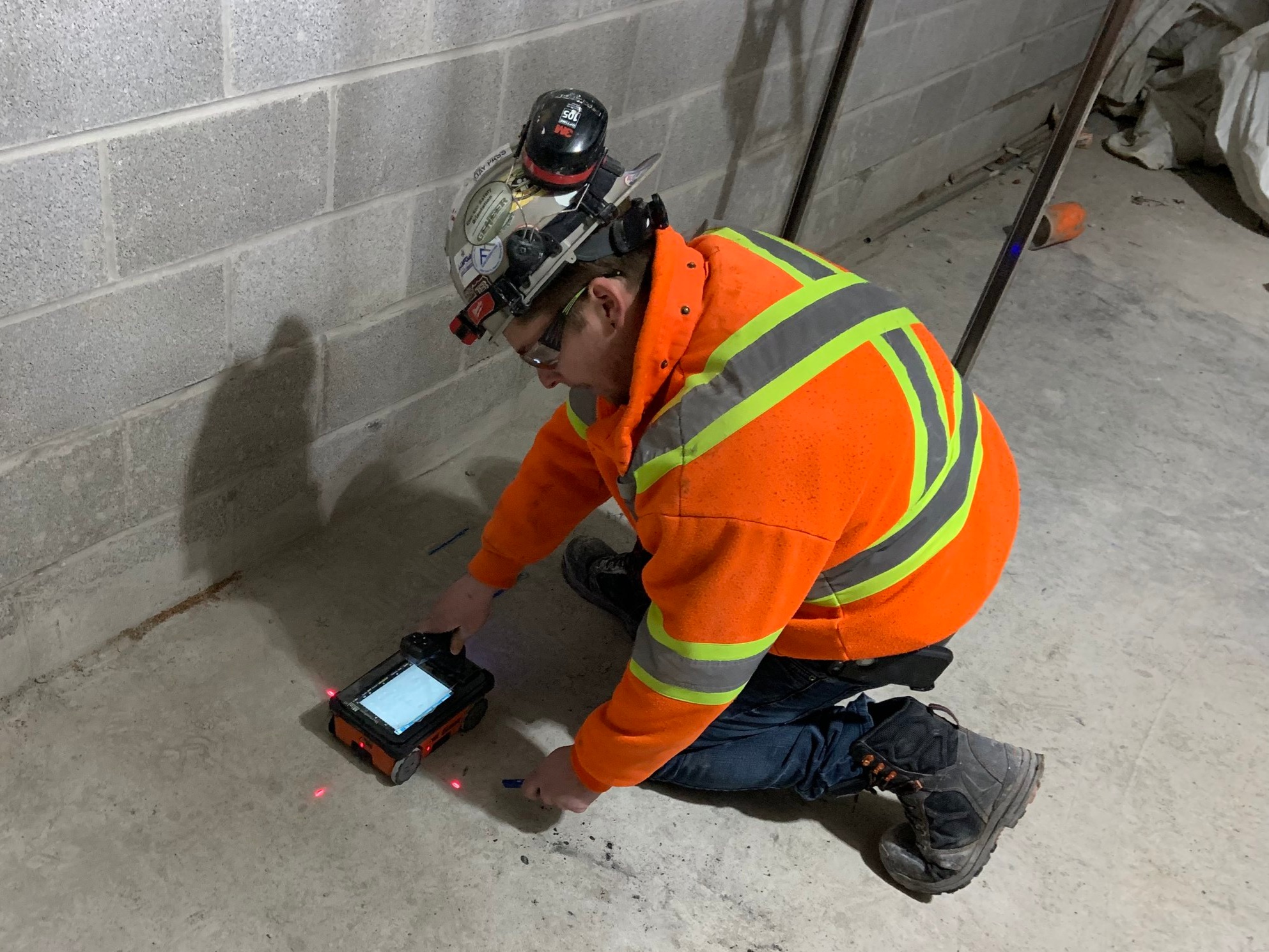Comprehensive Guide to Concrete Scanning Technologies
Comprehensive Guide to Concrete Scanning Technologies
Blog Article
Digging Into Accuracy: the Duty of Concrete Scanning in Enhancing Construction Security and Performance
In the world of contemporary building techniques, the complexities of security and effectiveness have ended up being vital considerations. Concrete scanning, an innovation that has actually gotten substantial grip in the sector, plays a vital duty in boosting these basic aspects of building jobs. By offering an accurate insight into the composition and layout of concrete structures, this innovative technique not just boosts safety procedures on site yet also adds to enhancing project planning. The effects of concrete scanning expand much beyond surface-level benefits, assuring a deep-rooted influence on the general success of building endeavors.
Value of Concrete Scanning Technology
Concrete scanning modern technology plays an important function in making sure the safety and security and structural honesty of construction jobs. By utilizing different scanning techniques such as Ground Passing Through Radar (GPR) and electromagnetic induction, building and construction teams can detect embedded things, rebar, conduits, and various other potential blockages within concrete frameworks prior to commencing any kind of drilling or cutting tasks. This technology assists prevent unintended damage to vital facilities, minimizes the risk of structural failings, and boosts overall job efficiency.
Moreover, concrete scanning boosts employee security by giving accurate information regarding the problem of concrete aspects, enabling teams to plan and implement building tasks with precision. The capacity to picture subsurface attributes in real-time enables project managers to make educated choices, minimize prospective threats, and adhere to project timelines successfully. In addition, by recognizing any kind of abnormalities or issues early, construction teams can execute restorative procedures without delay, staying clear of pricey rework and hold-ups in the building procedure.
Essentially, the relevance of concrete scanning modern technology exists in its capacity to guard building and construction tasks, simplify procedures, and promote the highest possible criteria of safety and security and top quality in the sector.
Enhancing Precaution on Site

Concrete scanning modern technology plays a vital duty in enhancing security by permitting building teams to precisely find prospective risks such as rebar, avenues, and post-tension cords installed within concrete frameworks. By determining these dangers in development, workers can take needed precautions to prevent accidents during exploration, cutting, or coring tasks. This proactive approach not just safeguards the well-being of employees but also aids in avoiding expensive problems to the framework.
Integrating resource concrete scanning right into safety and security procedures shows a commitment to prioritizing security on building and construction sites, ultimately leading to more successful and reliable task results.
Maximizing Construction Project Planning
Reliable job preparation is vital for the successful execution of building jobs. Maximizing construction job preparing entails a precise method to organizing, resource allotment, and threat monitoring. By incorporating these innovations into the planning stage, building teams can proactively address challenges, improve control in between different professions, and make sure that projects are completed on time and within spending plan.
Decreasing Job Delays and Risks
To alleviate task delays and dangers, meticulous preparation and positive danger administration strategies are necessary in the building industry. Hold-ups in building and construction tasks can result in substantial financial losses, harmed track records, and even safety and security dangers. By making use of concrete scanning technology, building teams can recognize potential risks such as underground energies, rebar, or post-tension cable televisions prior to they rise right into pricey issues. This aggressive approach enables adjustments to be made to the project strategy, minimizing the possibility of hold-ups because of unexpected obstacles.
Along with utilizing concrete scanning technology, clear interaction amongst job stakeholders is crucial for identifying and resolving possible dangers at an early stage. Regular task meetings, updates on progress, and open channels for feedback can help make certain that any type of concerns are immediately handled to avoid hold-ups. Additionally, having contingency plans in position for typical risks in construction, such as unfavorable weather or product shortages, can aid alleviate the effect of these variables on task timelines. By prioritizing preparation and danger administration, building and construction teams can reduce project delays and threats, ultimately resulting in extra effective and reliable results.
Improving General Effectiveness and Performance
Given the relevance of precise planning and positive threat administration in minimizing task delays and dangers in construction, an emphasis on improving general efficiency and efficiency becomes crucial. Improving performance and look at here now efficiency in construction tasks entails simplifying procedures, maximizing resource allocation, and reducing downtime. Investing in devices and practices that prioritize performance and efficiency not just advantages private construction projects yet also contributes to the overall growth and success of the construction market.

Final Thought
In final thought, concrete scanning modern technology plays a critical role in boosting building safety and security and performance by enhancing precaution on website, optimizing job preparation, minimizing threats and delays, and inevitably boosting general performance. More about the author This technology is important for ensuring the successful conclusion of construction projects while focusing on the safety and security of employees and decreasing prospective risks. Its implementation can significantly benefit the building and construction sector in accomplishing greater degrees of precision and effectiveness.
Concrete scanning technology plays a vital duty in guaranteeing the safety and architectural integrity of building and construction tasks. Furthermore, by recognizing any type of defects or abnormalities early on, construction groups can apply rehabilitative steps immediately, preventing costly rework and hold-ups in the construction procedure.
Efficient job planning is important for the effective execution of building tasks. Spending in devices and practices that focus on performance and performance not only advantages specific building jobs but additionally contributes to the total development and success of the construction industry.
In verdict, concrete scanning modern technology plays a critical function in boosting construction security and efficiency by improving security measures on site, optimizing project preparation, reducing threats and hold-ups, and eventually raising general productivity. - Concrete Scanning
Report this page